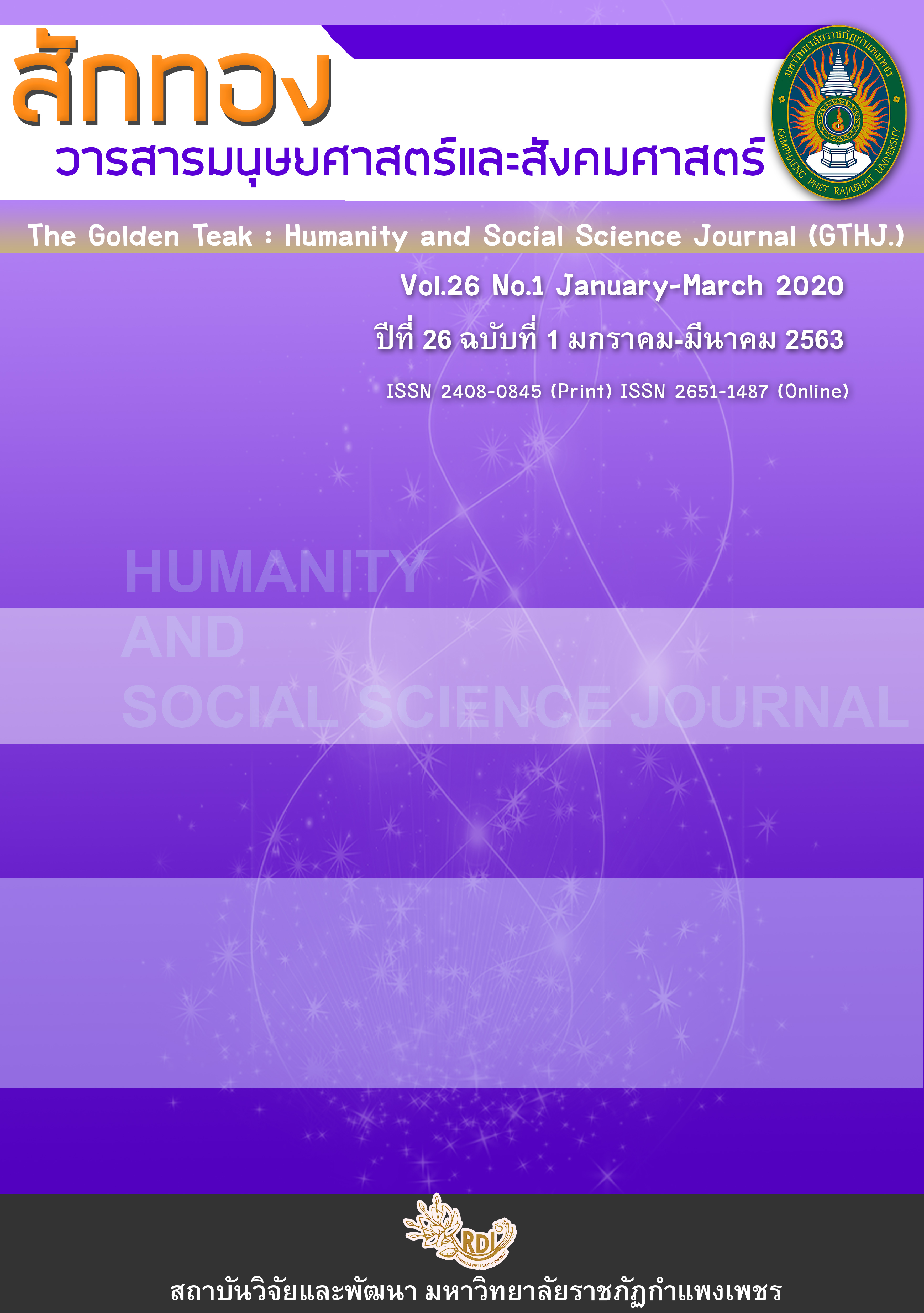The use of English Regular Plural forms by Thai EFL Learners
Main Article Content
Abstract
According to Markedness Differential Hypothesis (MDH), the degree of difficulty in learning a target language can be predicted according to the degree of markedness between the first and second languages. Based on the MDH, this study investigates how well participants could perceive and produce the sounds of English regular plural forms ([s], [z] and [z]). Sixty Thai university students majoring in English participated in the study. They were divided into two groups according to their academic year (30 first-year and 30 fourth-year students). Two tests (perception and production tests) were employed in this study. The result shows that participants in both groups have a problem perceiving the regular plural sound [z], while the regular plural sounds [z] and [z] were difficult to produce.
Article Details
บทความที่ได้รับการตีพิมพ์เป็นลิขสิทธิ์ของวารสาร สักทอง : วารสารมนุษยศาสตร์และสังคมศาสตร์ สถาบันวิจัยและพัฒนา มหาวิทยาลับราชภัฏกำแพงเพชร
ข้อคิดเห็นใดๆ ที่ปรากฎในวารสารเป็นวรรณกรรมของผู้เขียนโดยเฉพาะ ซึ่งมหาวิทยาลัยราชภัฏกำแพงเพชรและบรรณาธิการไม่จำเป็นต้องเห็นด้วย
References
Akande, A.T. (2003). Acquisition of the inflectional morphemes by Nigeria learners of English. Nordic Journal of African Studies, 12(3), 310-326. _______. (2005). Morphological errors in the English usage of some Nigerian learners : Causes and remedies. [Online]. Available : http://www.academia. edu/1804961. [2016, January 15].
Al-Janaideh, R.E. D.A. B. & Mahadin, R. The Acquisition of the English Plural Morpheme and the Regular Past Tense Morpheme by Arabic-Speaking Students in Jordan. [Online]. Available : https://scholar.google.co.th/scholar. [2016, January 15].
Al-Saidat, E.M. (2012). Acquisition of the Inflectional Morphology of English as a Foreign Language : An error analysis approach. The Buckingham Journal of Language and Linguistics, 5, 19-37.
Bansal, R.K. (1990). The pronunciation of English in India. Studies in the pronunciation of English : A commemorative volume in honour of AC Gimson, 219-230.
Berko, J. (1958). The child's learning of English morphology. Word, 14(2-3), 150-177.
Budge, C. (1989). Plural Marking in Hong Kong English. Hongkong Papers in Linguistics and Language Teaching, 12, 39-48.
Eckman, F.R. (1977). Markedness and the contrastive analysis hypothesis. Language learning, 27(2), 315-330. Jenkins, S. (2000). Cultural and linguistic miscues: A case study of international teaching assistant and academic faculty miscommunication. International Journal of Intercultural Relations, 24(4), 477-501.
Kachru, B.B. (1990). World Englishes and applied linguistics. ERIC, 91(1), 178-205.
Kang, O. (2010). ESL learners' attitudes toward pronunciation instruction and varieties of English. In Proceedings of the 1st Pronunciation in Second Language Learning and Teaching Conference. Ames, IA : Iowa State University (pp. 105-118).
Kenworthy, J. (1992). Teaching pronunciation. New York, USA : Longman Publishing.
Marzá, N.E. (2014). Pronunciation and Comprehension of Oral English in the English as a Foreign Language Class : Key Aspects, Students’ Perceptions and Proposals. Journal of Language Teaching and Research, 5(2), 262-273.
McIlwain, J. & Peterson, P. (2005). Signaling Plurality in Learner English. Proceedings of the 2004 Conference of the Australian Linguistic Society. [Online]. Available : http://hdl.handle.net/2123/103. [2016, March 22].
Mealings, K.T., Cox, F. & Demuth, K. (2013). Acoustic investigations into the later acquisition of syllabic-es plurals. Journal of Speech, Language, and Hearing Research, 56(4), 1260-1271.
Ninpanit, S. & Pongpairoj, N. (2016). The Acquisition of the English Plural Morpheme by L1 Thai Learners: A Case of the Failed Functional Features Hypothesis. Pasaa Paritat Journal, 31, 55-80.
Nelson, C.L. (2008). Intelligibility since 1969. World Englishes, 27(3-4), 297-308.
Şen, Y. & Kulel, M. (2017). Use of plural in spoken English in an EFL context. Eurasian Journal of Applied Linguistics, 3(2), 139-153.
Smith, L. & Nelson, C. (1985). International intelligibility of English : Directions and resources. World Englishes, 4(3), 333-342.
Solt, S., et al. (2004). L2 perception and production of the English regular past : Evidence of phonological effects. In BUCLD 28 : Proceedings of the 28th Annual Boston University Conference on Language Development (pp. 553-564)
Wei, Y. & Zhou, Y. (2002). Insights into English pronunciation problems of Thai students. [Online]. Available : https://files.eric.ed.gov/fulltext/ED476746.pdf. [2016, July 16].


